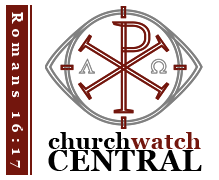British historian Charles Freeman claims that he has compiled all of the information he can about the Shroud of Turin and has come to the conclusion that it was just intended to be a prop for people in medieval times who celebrated Christ’s resurrection on Easter, the pagan holiday.
Freeman noted that the very first mention of the Shroud appeared in the 1300s, around the time emphasis was placed on how bloodied Christ was at his trial and crucifixion. Prior to that, Freeman claims, all depictions of Christ were free of the blood and gore that is popular today. His views line up with the questionable method of radiocarbon dating done of the Shroud in 1988 that gives it a 14th century date. Freeman argues the Shroud only became a relic in the 15th century, when “it was acquired by the House of Savoy in 1453 … to shore up the power base of the insecure Alpine dukedom.”
Examining the various engravings of the Shroud, Freeman points out, “few researchers appear to have grasped that the shroud looked very different in the 16th and 17th centuries from the object we see today.” In other words, he believes it was tampered with at various times to match the bloodied Christ depiction so common today.
As I have noted before, the Bible states clearly that Jesus’ burial cloths were in two pieces or more–one for his head, the other(s) for the rest of his body, as was Jewish custom (John 11:43-44; John 20:6-7). The Shroud is one piece of cloth that supposedly covered Christ’s whole body. When details like this conflict, I would rather stick to what the Bible says. Despite this, many who claim Christianity are caught up in venerating (worshiping) this thing as a religious relic when, in fact, true Christianity is not in the business of promoting the veneration of any relics.
For more info on Freeman’s research, read the original article that appeared on October 23 in The Guardian.























Hi Harry – here’s a link to Dr. Habermas’ academic article regarding the shroud http://www.garyhabermas.com/articles/J_Evangelical_Theological_Soc/Habermas_JETS_Shroud-of-Turin-and-significance.htm
Habermas is perhaps best known for his ground-breaking thesis on the historical evidence for the death and resurrection of Jesus using his Minimal Facts Approach. With regard to the shroud, he obviously thinks there is enough evidence to warrant further investigation.
LikeLike
Dean,
Habermas’s take on this is why I don’t agree with everything ‘scholars’ say unless what they say is in agreement with Bible truth on biblical subjects. Not only was Jesus’ face wrapped separately, the Bible tells us his face was marred beyond recognition (Isaiah 52:14) due partially to the fact his beard was ripped out (Isaiah 50:6). The guy who was in the shroud had his face slightly scarred and is recognizable with his beard intact.
Also, Jews didn’t bury their dead in Jesus’ day with coins over their eyes as the person in the shroud was. These are just a few of many discrepancies. So I’m sticking with what the Bible says. Let God be true but every man a liar (Romans 3:4).
Catholics and people in Christianity who buy into relics usually do so in desperate attempts to show how super-spiritual they are or believe one must have such things to prove the resurrection. The Bible along with worshiping God in spirit and truth trump any tradition of men.
LikeLike
All Jesus asked us to do was to “Believe”. Read His Bible and you will know all that you have to know and from that place, do it……….
LikeLike